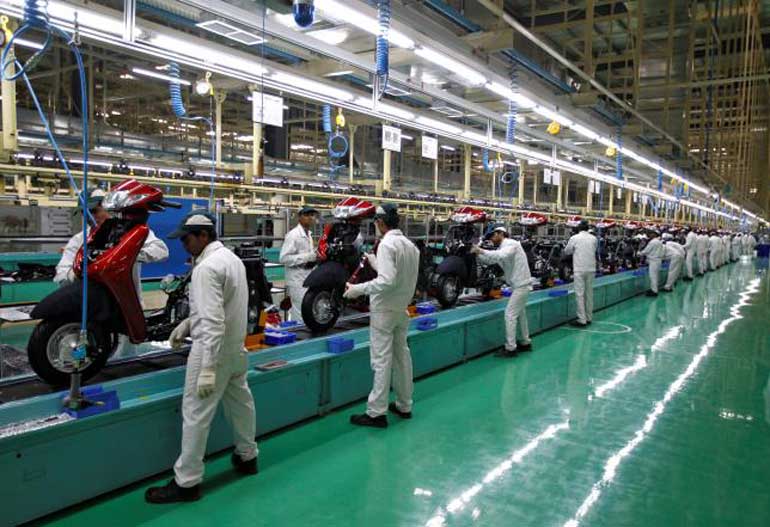Sunday Jan 12, 2025
Sunday Jan 12, 2025
Wednesday, 1 June 2016 00:00 - - {{hitsCtrl.values.hits}}

Employees work on an assembly line of Honda Motorcycle & Scooter India during a media tour to the newly inaugurated plant at Vithalapur town in the western state of Gujarat, India, 17 February – REUTERS
Reuters: India probably gathered momentum to hold its ranking as the world’s fastest growing large economy in the quarter through March, giving Prime Minister Narendra Modi more to celebrate after completing two years in office last week.
Modi swept to power promising to revitalise Asia’s third-largest economy and, despite a dearth of private investment and shrinking exports, his policies are having some success as cooling inflation and lower interest rates have boosted consumer demand.
A Reuters survey of economists expected data out on Tuesday will show India’s gross domestic product grew 7.5% year-on-year between January and March, faster than the previous quarter’s 7.3%.
“This 7.5% growth, in a global slowdown environment, has a potential to pick up even more,” Finance Minister Arun Jaitley said last week in general comments about the trends.
India’s upbeat outlook contrasts with neighbouring China, where growth slipped to 6.7 in the first quarter – the slowest posted by the world’s second largest economy in seven years.
Given the dim prospects for a boost from exports, Moody’s Investors Service said a recovery in private investment would be needed if India’s upturn was going to last.
“Combined with the fact that external demand is likely to remain lacklustre, a sustained improvement in domestic private investment would be required for the growth momentum to be sustained,” the rating agency’s analysts wrote in a note.
Meantime, the Reserve Bank of India (RBI) is widely expected to keep its policy interest rate on hold at a scheduled policy review on 7 June as it waits for banks to fully pass on the previous the benefits of earlier cuts to borrowers.
Consumers, particularly in urban areas, have been encouraged by the lower rates.
Sales of passenger cars and two-wheelers are growing at a double-digit pace. Sales of new residential units recovered in the last quarter, snapping a falling trend.
Personal loans that include loans for durable goods, housing and education are growing at a rate of 19% year-on-year, while credit card loans are growing at a 24% clip.
With good rains forecast this summer, the farm sector is set to get a fillip after two successive years of drought. That bodes well for depressed rural demand.
Impending increases in wages and pensions of government employees are also expected to underpin consumer spending.
Challenges
As part of his strategy to boost business and generate jobs, Modi has accelerated public spending on road construction, laying new power lines and upgrading the rail network.
He has also lifted caps on foreign investments in sectors such as insurance and defence manufacturing.
Still, an upturn in private capital investment remains elusive.
Festering bad loans have made banks wary of fresh lending, forcing cash-strapped firms to keep a lid on capital outlays and, in any case, many factories are still running well below capacity.
External uncertainties, meanwhile, are on the rise. Chances of U.S. interest rates going up, Britain voting to leave the European Union, and China’s economy worsening all pose risks for emerging markets like India.
The South Asian nation has benefited massively from cheap crude over the past two years as its oil import bill halved, inflation fell and public finances improved.
But, economists reckon oil’s recent rally above $50 a barrel could knock 20-30 basis points off the growth rate, while boosting the inflation rate by up to 60 basis points.